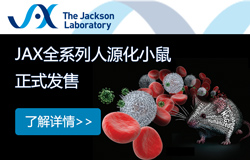Isolation of human endometrial epithelial cells
Isolation of human endometrial epithelial cells
Tissue collection
1. Endometrial biopsies were collected from women undergoing gynaecological procedures for benign conditions.
2. All women reported regular menstrual cycles (25–35 days) and had not received any form of hormonal treatment in the 3 months preceding biopsy.
3. Biopsies were dated from the patient's last menstrual period (LMP).
4. Histological dating according to published criteria and circulating sex steroid concentrations were consistent with the date of LMP.
5. Written informed consent was obtained from all patients prior to biopsy collection and ethical approval was received from Research Ethics Committee.
6. Tissue samples were collected in primary cell medium and were subsequently divided into two portions.
7. Endometrium was: (i) fixed in 10% neutral buffered formalin overnight at 4°C, stored in 70% ethanol and then wax embedded; and (ii) separated into glandular and stromal compartments for cell culture.
Separation of endometrial biopsies into glandular and stromal compartments
1. This method for separation of glandular and stromal compartments of endometrium was adapted from that of Reference.
2. Several modifications were made and the details of the method used in this study are described below.
3. Endometrial biopsies were washed twice in phosphate-buffered saline, sliced into small fragments, immersed in collagenase/DNAase (1 and 0.1 mg/ml) and incubated for 80 min at 37°C.
4. After incubation, primary cell medium was added and tissue was broken up using a syringe.
5. This yielded single cells and larger, glandular fragments.
6. This suspension was centrifuged (450 g, 3 min) and then cells/fragments were resuspended in fresh medium and allowed to separate by density sedimentation.
7. After 5 min the supernatant (stromal compartment) was removed leaving 2 ml of medium.
8. Fresh medium was added and the density sedimentation was repeated. The remaining 2 ml of medium contained glandular fragments that were centrifuged as above.
9. Medium was discarded and the epithelial fragments were incubated with collagenase/DNAase for 2 h at 37°C.
10. After incubation, medium was added and the cell suspension was centrifuged (see above).
11. Medium was removed and the epithelial cell pellet was resuspended in 50% Matrigel.
Cell culture
1. Primary endometrial epithelial cells were grown in Matrigel in primary cell medium supplemented with 10% fetal calf serum, penicillin (50 μg/ml; Sigma), streptomycin (50 μg/ml; Sigma), gentamycin (5 μg/ml; Sigma), epidermal growth factor (25 ng/ml), vascular endothelial growth factor (1 ng/ml), basic fibroblast growth factor (5 ng/ml;) and estradiol (10–7 mol/l).
2. These growth factors were included in the primary culture medium as there is evidence that endometrial epithelial cells express their receptors and hence they are likely to be involved in modulation of cell growth.
References
1. Noyes, R.W., Hertig, A.T. and Rock, J. (1950) Dating the endometrial biopsy. Fertil. Steril., 1, 3–25.
2. Osteen, K.G., Hill, G.A., Hargrove, J.T. and Gorstein, F. (1989) Development of a method to isolate and culture highly purified populations of stromal and epithelial cells from human endometrial biopsy specimens. Fertil. Steril., 52, 965–972.
3. Li, X.F., Gregory, J. and Ahmed, A. (1994) Immunolocalisation of vascular endothelial growth factor in human endometrium. Growth Factors, 11, 277–282.
4. Zhang, L., Rees, M.C. and Bicknell, R. (1995) The isolation and long-term culture of normal human endometrial epithelium and stroma. Expression of mRNAs for angiogenic polypeptides basally and on oestrogen and progesterone challenges. J. Cell Sci., 108, 323–331.
5. angha, R.K., Li, X.F., Shams, M. and Ahmed, A. (1997) Fibroblast growth factor receptor-1 is a critical component for endometrial remodeling: localization and expression of basic fibroblast growth factor and FGF-R1 in human endometrium during the menstrual cycle and decreased FGF-R1 expression in menorrhagia. Lab. Invest., 77, 389–402.
6. Meduri, G., Bausero, P. and Perrot-Applanat, M. (2000) Expression of vascular endothelial growth factor receptors in the human endometrium: modulation during the menstrual cycle. Biol. Reprod., 62, 439–447.





